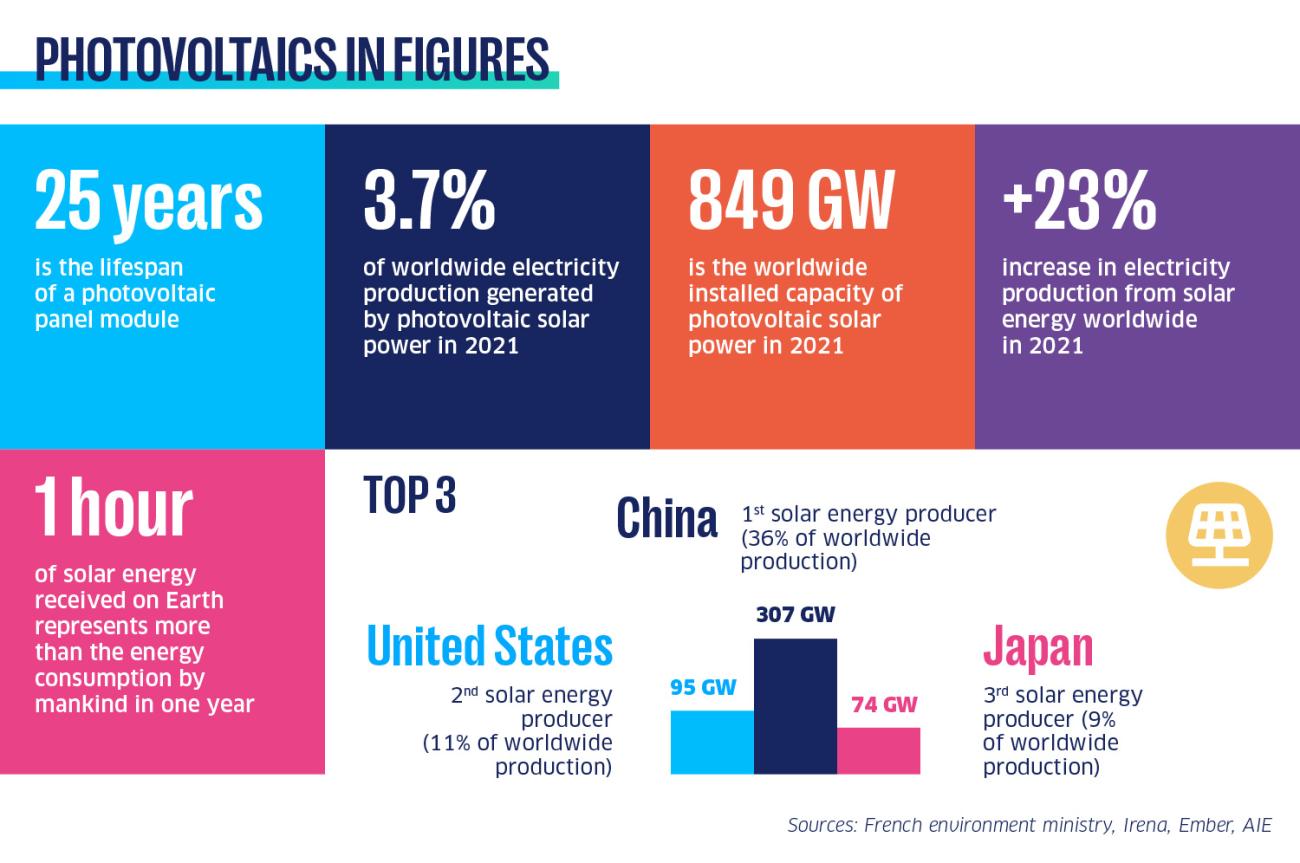
Solar power is a booming renewable energy
It could account for 16% of worldwide electricity production in 2050, compared with 3.7% of today's energy mix. But it has a bright future because the sun's energy is eternal (five billion years' life according to astronomers). In fact, of all renewable energy sources, solar power is the fastest growing. Its price has become very competitive in a growing number of countries. And solar energy is set to become a vital source if our world is to be carbon neutral by 2050.
What is solar energy?
It is the energy generated by solar radiation. The nuclear fusion that occurs on a massive scale in the Sun releases incredible quantities of heat and light. We humans capture part of the energy received on Earth to produce electricity and heat. Two key technologies help us do this: photovoltaic solar panels (electricity production) and thermal solar panels (heat production).
Electricity is produced by photovoltaic modules (better known as solar panels)
One module consists of cells joined together. They absorb energy from photons, which release electrons caught up in an internal magnetic field, creating a continuous electric current. The module is connected to electric elements - inverter, transformer, junction box, etc. - which transform this continuous current into an alternating current, which can be injected into the distribution system (for us to use!). Most modules now use silicon cells (extracted from sand or quartz).
The second technique – thermal solar production
Consists in converting solar radiation into thermal energy. Sunlight is highly concentrated in mirrored panels, which reflect it towards receivers, which then heat molten salts or other heat transfer fluids. The captured heat is used to heat or to produce steam to operate a turbine or generator, to produce electricity.
How is solar energy used?
Photovoltaic panels are extremely modular! Small quantities are mounted on small items of equipment, like watches or calculators, or are used to fuel hiking equipment. On a medium scale, panels are used to supply electricity to houses using modules mounted on the roof. Finally, on an industrial scale, large solar farms inject electricity into the grid. The heat produced using thermal solar technology can be used for domestic heating or to produce domestic hot water.
Photovoltaic modules are also used in agriculture as part of made-to-measure energy systems that boost crop yields and produce green electricity. Solar panels can even be found in space, where they have been mounted on satellites for decades already and are used to supply electricity to the international space station. They are essential to provide Thomas Pesquet and his colleagues with heating, ventilation and lighting.
Solar energy can be adapted to a broad range of usages and consumers, from private customers and industrial manufacturers, to farmers.
What happens to end-of-life solar panels?
They can be recycled or reused. In concrete terms, the aluminium frames and cables are recycled, other metals (silver, etc.) are recovered and the glass and silicon plates are crushed and reused in other industries or in construction as a substitute for sand. The parts made of plastic or polymers are recycled using chemical processes or pyrolysis, or are reused as solid recovered fuel for heating or to produce electricity. Existing panels can also be reconditioned and reused, after replacing all the worn components. In France, the eco-enterprise Soren has been recycling panels since 2014, by collecting, sorting and recycling modules.
